Toa Payoh Bus Interchange is an Integrated Transport Hub (ITH) located at Toa Payoh Town Centre, serving the town of Toa Payoh and Braddell. It is the first air-conditioned bus interchange in Singapore, integrated within the Toa Payoh HDB Hub and built on top of Toa Payoh MRT Station.
Details:
| Name | Toa Payoh Bus Interchange | 大巴窑巴士转换站 |
| Address | 530 Lorong 6 Toa Payoh, Singapore 310530 |
| BCM Route Package | Bishan-Toa Payoh Bus Package |
| Anchor Operator | SBS Transit Ltd |
| Bus Routes | 20 (SBS Transit) 1 (Tower Transit) |
| Berths | 4 sawtooth, 14 end-on |
| Rail Connection | NS19 Toa Payoh |
The Interchange:
Toa Payoh Bus Interchange is a bus station located in the residential town of Toa Payoh. Connecting with Toa Payoh MRT Station along the North-South Line, the interchange is a transport node for commuters heading in and out of town, allowing for convenient transfers between the rail network and the many bus services at the interchange.
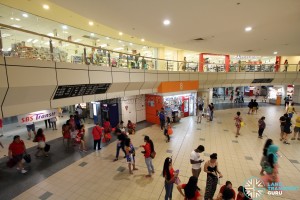
Opened in May 2002, Toa Payoh Bus Interchange was the first air-conditioned bus interchange to be opened in Singapore, as well as the first Integrated Transport Hub (ITH). The interchange is integrated within the retail portion of Toa Payoh HDB Hub, which also houses commercial offices and residential developments under one roof.
The facility is built on top of the underground Toa Payoh MRT Station, which adds to the convenience of transferring between buses and trains. The interchange design is a unique mix of end-on berths on the western side, and sawtooth berths on the eastern side.
History:
- 1971: Toa Payoh Central Bus Terminal begins operations
- 1983: Toa Payoh Bus Interchange is built
- 1998: Interchange demolished, shifted to a temporary site
- 2002: New Toa Payoh Interchange opens.
Toa Payoh New Town was developed in the mid-1960s, and by the late 1960s, there were still no proper facilities for buses at Toa Payoh. The roadside bus terminal along Lorong 1 Toa Payoh was a constant source of traffic jams, and other roadside terminals along Lorong 6 Toa Payoh and Kim Keat Avenue existed back then. After much public appeal, the Housing and and Development Board (HDB) constructed a new bus terminal the junction of Lorong 2 Toa Payoh and Lorong 4 Toa Payoh. Opened in August 1971, the Toa Payoh Central Bus Terminal, otherwise also known as Toa Payoh Town Centre Bus Terminal, was able to accommodate 130 buses. The terminal would cease operations in the 1980s.
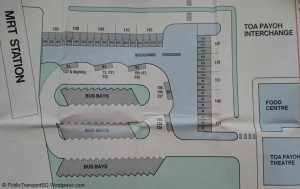
On 26 December 1983, Toa Payoh Bus Interchange was opened. Constructed over the existing site, it contained many new facilities such as coin-changing machines and information counters. That same day, the Toa Payoh Bus Plan was initiated, which reorganized the bus routes within Toa Payoh and with it, the introduction of six new Feeder bus routes.
On 31 May 1998, operations were shifted to the Toa Payoh Temporary Bus Interchange across Lorong 6 Toa Payoh, where Toa Payoh Town Park currently sits now. The old interchange site was demolished to make way for the construction of HDB Hub, the new headquarters of the Housing and Development Board (HDB).
On 19 May 2002, the current Toa Payoh Bus Interchange was officially opened by then-Minister for Transport, Yeo Cheow Tong. Integrated within the HDB Hub, the facility is directly connected to Toa Payoh MRT Station and offers retail, commercial and residential developments under one roof. It is notably the first Integrated Transport Hub (ITH) in Singapore and the first air-conditioned bus interchange.
Feeder bus services:
Toa Payoh Interchange has housed seven feeder services:
- Service 230: Looped at Lorong 8 Toa Payoh. Withdrawn. Reintroduced in 2023; looping at Kim Keat Ave
- Service 231: Looped at Braddel via Lorong 1, 4 and 6. Green/White plate designations were used for clockwise and anticlockwise loops respectively. Merged into a single Service 231 when it was amended to loop at Toa Payoh Lorong 5 in 2012.
- Service 232: Looped at Lorong 2 Toa Payoh, using Green/White plate. Amended to Lorong 4 and TPY Central in 1993, and merged with 237 to loop at Lorong 7.
- Service 235: Looped at Lorong 3 Toa Payoh. Amended to Toa Payoh East in 2010, and extended to Toa Payoh Rise (Caldecott MRT) in 2012 via Lorong 3, 2 and 1.
- Service 237: Looped at Lorong 7 Toa Payoh, via Lorong 6 and Toa Payoh East. Merged with 232 and withdrawn in 2002.
- Service 238: Looped at Lorong 8 Toa Payoh, no route change.
- Service 239: Looped at Kim Keat Avenue, withdrawn in 1985 after road realignment works to accommodate the slip road to PIE.
Interchange facilities:
- Interchange offices (SBS Transit)
- Top Up Kiosks
- SimplyGo Ticket Office
- Drivers lounge
- NTWU Canteen
- Boarding and alighting berths
- Information boards & Bus arrival displays
- Service guide racks
- Retail outlets
- Toilets
Bus Services:
| Service | Berth | Destination | Remarks |
| 8 | A7 | Tampines | |
| 26 | A12 | Bedok | |
| 28 | A13 | Tampines | |
| 31 | A5 | Tampines | |
| 73 | B3 | Ang Mo Kio | Looping Point |
| 88 | A9 | Pasir Ris | |
| 90 | A6 | ↺ Airport Road | |
| 90A | A6 | Airport Road (Paya Lebar Air Base) | Short Trip Service |
| 139 | A2 | Bukit Merah | |
| 139A | A2 | Jalan Bahagia (Bet Blks 33/34) | Short Trip Service |
| 141 | A11 | Lorong 1 Geylang | |
| 142 | A8 | ↺ Potong Pasir Avenue 1 | |
| 142A | A8 | Upper Serangoon Road (Sant Ritz) | Short Trip Service |
| 143 | A1 | Jurong East | |
| 145 | A3 | Buona Vista | |
| 155 | A14 | Bedok | |
| 157 | B4 | Boon Lay | |
| 159 | B4 | Sengkang | |
| 163 | B4 | Sengkang | |
| 230M | B3 | ↺ Kim Keat Avenue | |
| 231 | B2 | ↺ Lorong 5 Toa Payoh | |
| 232 | B3 | ↺ Toa Payoh East | |
| 235 | B3 | ↺ Toa Payoh Link | |
| 238 | B2 | ↺ Lorong 8 Toa Payoh |
Berth Allocation:
In Toa Payoh Interchange, A-prefixes are used for end-on berths while B-prefixes are used for sawtooth berths. Unused queuing berths are often used as additional parking space for other services.
| Berth | Type | Services |
| A1 | End-on | 143 |
| A2 | End-on | 139/139A |
| A3 | End-on | 145 |
| A4 | End-on | Closed for upgrading from 8 Nov 2025 |
| A5 | End-on | 31 |
| A6 | End-on | 90/90A |
| A7 | End-on | 8 |
| A8 | End-on | 142/142A |
| A9 | End-on | 88 |
| A10 | End-on | — |
| A11 | End-on | 141 |
| A12 | End-on | 26 |
| A13 | End-on | 28 |
| A14 | End-on | 155 |
| Alighting | Linear | For alighting only |
| B1 | Sawtooth | Closed for upgrading from 20 Dec 2025 |
| B2 | Sawtooth | 231, 238 |
| B3 | Sawtooth | 73, 230M, 232, 235 |
| B4 | Sawtooth | 157, 159, 163 |
Note:
Due to ongoing upgrading works, there are changes in boarding berth for bus services at Toa Payoh Int.
- Berth B1 closure & Berth B2 reopening from 20 Dec 2025:
231 & 238 from B1 to B2 - Berth A3 reopening from 8 Nov 2025 (Berth A4 Closure):
145 from A4 to A3
- Berth A1 closure from 17 Oct 2024 till early Jun 2025:
143 to A2; 139A from A2 to A3 - Berth A1 reopening from early Jun 2025:
143 to A1 from A2 - Berth B3 changes for new Service 230M from 8 Jun 2025:
163 to B2 - Berth B4 closure from 31 May 2025:
157 to B3; 159 to A8 - Berth A2/A3 closure from early Jun 2025:
139/139A to A4 - Berth B4 reopening from 11 Oct 2025:
157 from B3; 159 from A8; 163 from B2 - Berth A2 reopening from 31 Oct 2025:
139/139A from A4 to A2 - Berth B2 closure from 18 Oct 2025:
142 to A8, 232 & 235 to B3; 141 from B3 to A11
Gallery (Sawtooth Berths):
Gallery (End-on berths):
Station Entrances:
Gallery (Change of Boarding Berths due to Upgrading):
External Links & References:
- http://remembersingapore.wordpress.com/2012/10/28/singapore-old-bus-interchanges-terminals/
- http://en.wikipedia.org/wiki/Toa_Payoh_Bus_Interchange
- http://www.sbstransit.com.sg/transport/trpt_bus_inter.aspx
Back to Bus Interchanges and Terminals
Back to Bus Articles
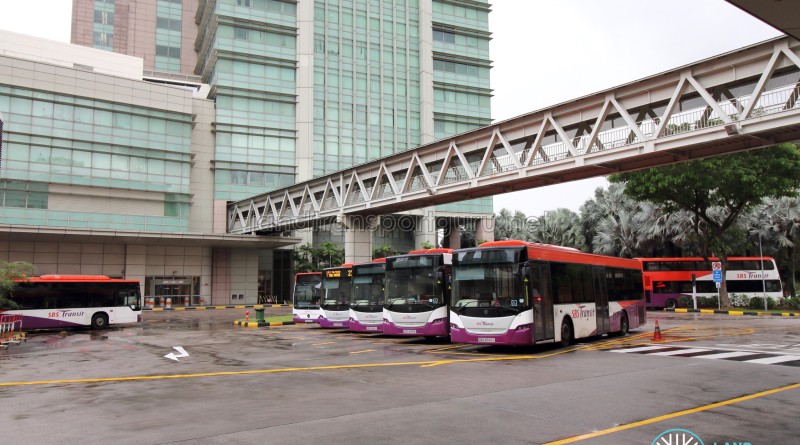
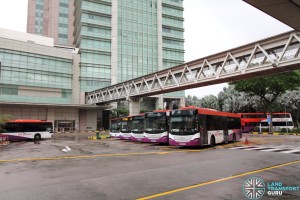

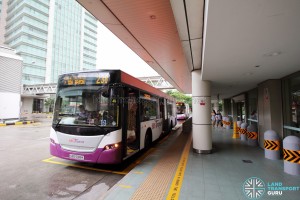
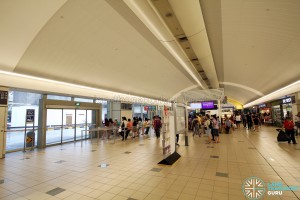

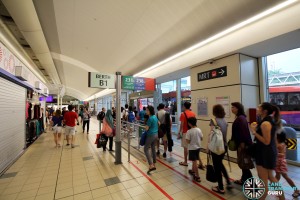


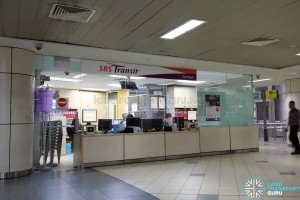
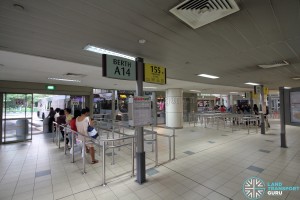
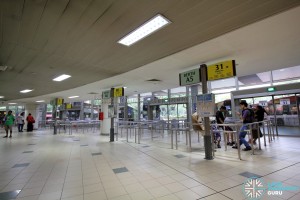
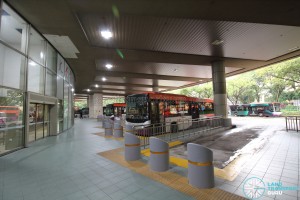
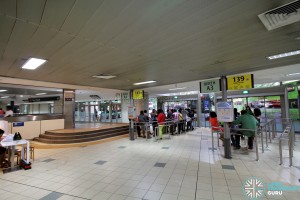
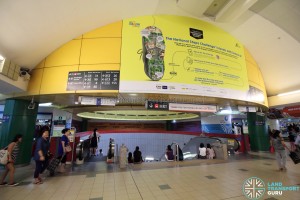


If Svc 82, 133 and 147 was targeted by the NEL Rationalisation Phase 3, it could have been Toa Payoh – Clementi. Svc 82 could have been amended to start at Toa Payoh and Loop at Punggol Rd End and cover Svc 147’s lost sectors between Hougang – Potong Pasir and Service 133’s Potong Pasir – Serangoon if Svc 133 was to be shortened to Toa Payoh
If Toa Payoh could have a total of 90 parking lots of which 45 parking are reserved for 15 end-on berths. 45 lots are for sawtooth berths of which, 6 slots can be reserved for articulated busses. It’s design would have used end-on berths (at least 10 end-on berths for boarding & alighting) on the western side, and 7 linear alighting berths, 16 sawtooth boarding berths and 5 end-on boarding berths on the eastern side. Can absorb St. Michael’s Ter routes, rationalized NEL routes to terminate at Toa Payoh.
Toa Payoh could have a total of 65 parking lots of which 34 parking are reserved for 17 end-on Iberths. 31 lots are for sawtooth berths of which, one slot can be reserved for articulated busses. It’s design would have used end-on berths (at least 9 end-on berths for boarding & alighting) on the western side, and 3 linear alighting berths, 4 boarding sawtooth berths and 7-8 end-on boarding berths on the eastern side.
Bus Parking Lots would have been at least 65 in which 34 are for end-on berths, 31 lots are reserved for sawtooth berths in which 2 slots are reserved for bendy berths
Toa Payoh Integrated Transport Hub’s design would have used end-on berths (at least 9 end-on berths for boarding & alighting) on the western side, and 3 linear alighting berths, 4 boarding sawtooth berths and 7-8 end-on boarding berths on the eastern side.